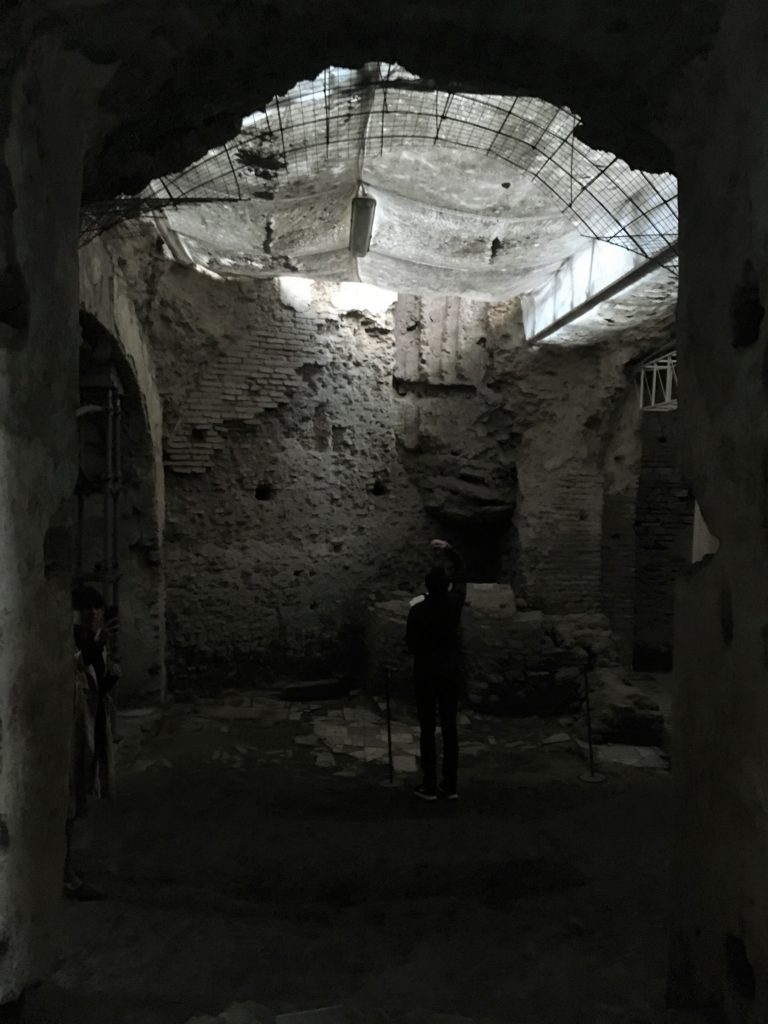
It has been pointed out to me that certain classes get more coverage and attention on this blog than others, and one of the classes that many people truly regret not signing up for and which isn’t apparently getting too covered here, is Jan’s class entitled “topography and urban history of Rome in antiquity and the middle ages”. Jan Gadeyne is teaching at too many universities to count (at the same time), with a PhD in archaeology and ancient art history, he from time to time appears in a documentary about one of the themes he studied, he is an active archaeologist… And there are probably many more facts that I don’t know about Jan.
In short, I will thus be writing today about our visit to the Crypta Balbi Museum which, I think, was at least for myself and some of my colleagues the most eye opening class or museum visit when it comes to understanding Rome. This is due to the fact that Jan’s class is preoccupied mainly by why something like renaissance could even happen and isn’t necessarily just enumerating works. By asking simple questions as “why”and “how” the whole point is to get to the very root of the matter, and then eventually be capable of recognising and making connections between the trees of the forest while making sense of it all. And so in this class one goes to the very roots of Rome, to the famous antiquity of this city, but also the sometimes overlooked and understudied early and late middle ages that are after all in many ways an incredibly important preface to then renaissance, which from at least my own point of view is perhaps more of an echo of the past with many modern additions.
With Jan’s enthusiasm and ever present good mood, we thus set out to explore the Crypta Balbi Museum. With a clear, structured and straight to the point discourse we went through the whole museum, uncovering the history of the site of the museum, where the Theater of Balbus once stood, and was later overtaken by artisans during the middle ages, compiling layer after layer of history one on top of each other. Visiting the museum and going through the finds excavated from beneath us wasn’t however the crown jewel of the visit. My only assumption is that since Jan is an active archaeologist himself, he obviously knows the circle of archaeologists in Rome, and thus this is not the first time that we gained access to the backstage of an excavation site, making all of the history so much more real and fascinating, all still fuelled by Jan’s measured and non-oppressive enthusiasm and passion for the subject.
We climbed down into the courtyard of the block where the museum is, to experience the more raw and unprocessed excavations, where ancient mosaics from the Theater of Balbus can be seen, with a medieval glass furnace sitting almost on top of it… As mentioned this isn’t the first time that we have visited excavations or active restoration sites that animated the course to a level that is truly unique only to this course at Cornell in Rome, when it comes to history. On another occasion, when we were visiting the Baths of Caracalla, we were also given access and a lecture by Jan about the underground spaces usually closed off to the public.
But perhaps the most exciting visit during one of our classes in the past, was the visit of the Basilica Porta Maggiore which is located many flights of stairs underground, has extremely humid air with little to no ventilation and is still being worked on by archaeologists, and completely inaccessible to the wider public, making it thus once again a truly unique and special experience. One leaves from the class sometimes exhausted, but definitely in a positive manner and rather excited, because given the structure of the course, one carries away from it an extended sense for critical thinking in architectural history, rather than just a number of references.

(all photos credit to Matej Dlabal)
